When Your Puppy Doesn’t Want to Walk: Reasons and Tips to Help
- Anja Boecker
- Updated: 2023-09-14
To make your puppy's walk a success from the start, start training early. Otherwise, walking can become a nightmare. In this article, you'll learn how to manage this with your puppy.
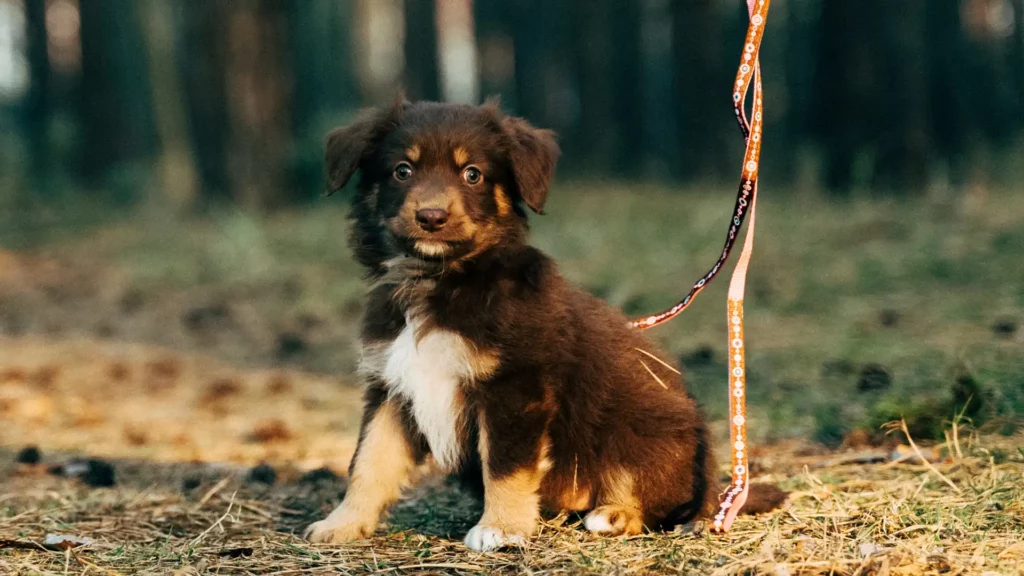
Many factors play an important role in puppy training.
An important aspect of puppy training is walking.
The walk allows the dog to do its business outside the home. The walk allows to do the business and many other benefits.
When you take your puppy for a walk, he learns important habits and becomes socialized. This is good for the relationship between you and your dog. It determines how your dog will react to other people, animals, and especially dogs.
Walking is also one of the most important forms of exercise. As a side note, walks should never replace play. Make puppy play a regular part of your life.
Your puppy doesn't want to go for a walk? We have the solution! We also make the connection to housetraining. This will make puppy training much easier for you.
3 Reasons
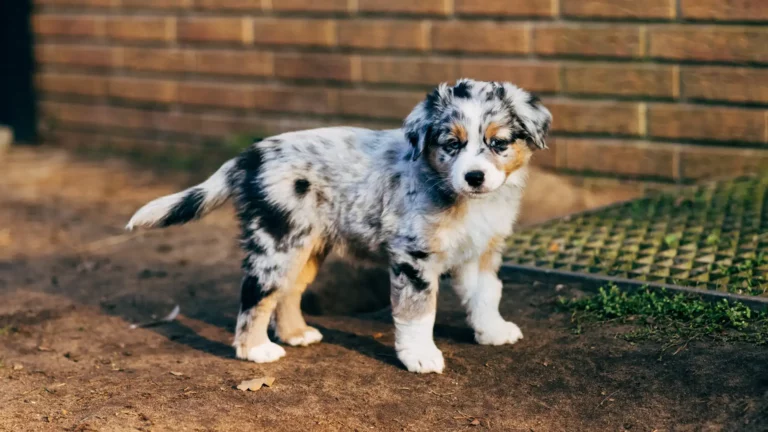
Sometimes the refusal to walk is for simple reasons, such as bad weather or fatigue. In other cases, it may be due to insecurity or fear of the new environment. It is important to give the puppy enough time to adjust to the new environ
The reasons and solutions may vary from puppy to puppy. Therefore, it is important to be patient and respond to the individual needs and personalities of the puppies.
There are many reasons why your puppy may not want to go for a walk with you, which can lead to problems. Here are the most common reasons:
Fear and Uncertainty
Reasons
- New environment: Everything is new and maybe even a little scary for your little four-legged friend.
- Noise and bustle: Loud noises or lots of unfamiliar people and animals can cause anxiety.
- Bad experiences: If the puppy has had a bad experience, he may be afraid that it will happen again.
Possible Solutions
- Slow familiarization: Slowly introduce the puppy to the outside world.
- Safe environment: Make sure the puppy is in a safe and quiet environment.
- Create positive associations: Combine the walk with positive experiences such as play or treats.
Your puppy is still small and walking has often been difficult for him? It could be because your little darling is too inexperienced to handle the big wide world. This is a normal reaction and can easily be reduced.
You may be taking your puppy for walks that are too long or too strenuous for him. Ideally, you have a green field or park nearby.
Feel free to carry your puppy until you get to greener pastures. But do it as sparingly as possible so he doesn't get used to it and you have the next problem.
It is important to slowly and gently introduce your puppy to walking. If you live in the city or don't have a green space nearby, you can take short walks right outside your door.
Choose your walking times wisely. Too much noise or crowding will only make your puppy more anxious.
No Desire
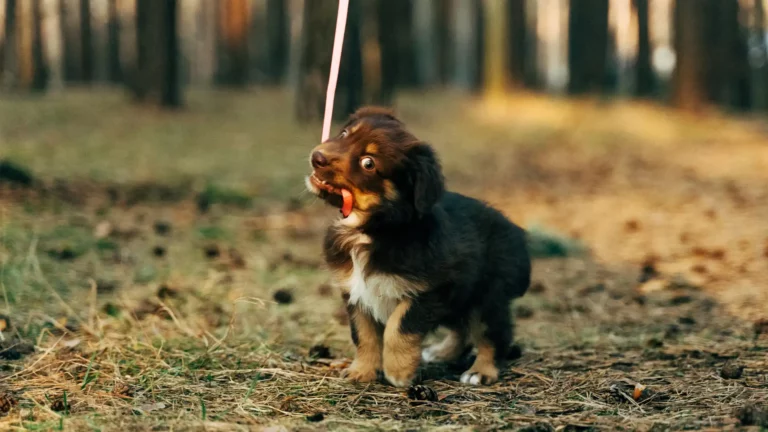
Reasons
- Disinterest: Sometimes the puppy just doesn't feel like walking and would rather play or cuddle.
- Pain: If the puppy is in pain or uncomfortable, he will not want to run.
- Fatigue: Puppies need a lot of sleep and sometimes are just too tired to go for a walk.
Possible Solutions
- Motivation through toys: Use his favorite toy to motivate him to walk.
- Veterinarian: If there are signs of pain or illness, a veterinarian should be consulted.
- Sufficient rest: Give the puppy plenty of sleep and do not force him to go for walks.
Laziness is relatively rare in dogs. Especially in young dogs it is more common than in adult dogs. Especially after a nap or in cold temperatures. A sheltered home seems to be a better choice.
Do not consider this behavior in your puppy to be willful or malicious. Such behaviors and reactions are common, especially in young dogs.
Is laziness the reason your puppy won't go for a walk? There are several things you can do to increase his motivation. For example, lure him outside with a treat.
Temperatures
Reasons
- Weather: Some puppies do not like certain weather conditions, be it rain, cold or heat.
- Irregular daily routine: Without a set routine, the puppy does not know what is expected of him.
Possible Solutions
- Customization: Customize walks to your puppy's preferences, such as choosing warmer or drier times to walk.
- Fixed times for walks: Set regular times for walks so the puppy gets used to them.
For young dogs, temperature plays a big role in their desire to go for a walk. Both very low and very high temperatures will cause the puppy to stay indoors instead of going out. Heat in particular has a negative effect.
For this reason, you should avoid too long walks. Several short walks are better. Extremely low and high temperatures can also affect your dog's health.
Choose times when temperatures are comfortable. On hot days, the morning and evening hours are recommended. On colder days, it's more likely to be midday and afternoon. This does not mean that you should neglect other times.
5 Tips and Tricks for Clicker Training
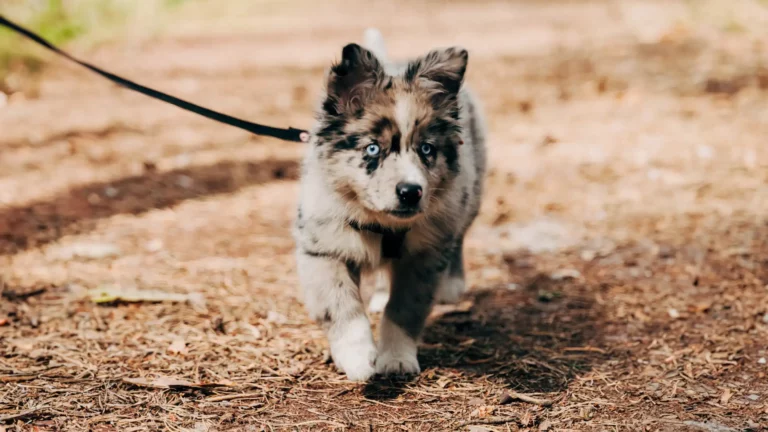
Here are a few more tips for getting your puppy to go for a walk:
1. Be Patient!
The best solution is patience. Your dog won't run anymore? Then do the following: Do not pull on the leash or yell at your dog. Luring him with a treat is also counterproductive in this situation.
Your dog will eventually get tired of staying in one place. A few minutes after you stop showing interest, your puppy will start moving again.
2. Your Home Must Be Out of Sight of Your Dog!
It is especially difficult for very young puppies to leave the house. Dozens of new stimuli affect their senses of hearing, smell, and sight.
Can your puppy still see his home in this situation? Then it will be difficult to get him to leave.
Carry your puppy a few yards until the house is out of sight, then begin your walk
3. Keep Fixed Times!
It's like us humans: We usually function like clockwork. We go to bed and get up at certain times. We go to work at certain times, finish our work, and eat. It's no different for dogs.
They need regular times and consistent rules to learn and practice. Be it feeding or even going for a walk.
That's why we recommend that you set specific times to walk. You should also be very consistent with these times. It is especially confusing for a puppy if he does not have a regular daily routine.
4. Do Not Use Research Methods!
Just as important are understanding and patience. Do not try to teach your pet by force. Be patient and remain calm. Harsh educational measures are not appropriate.
5. Praise Your Dog!
Don't forget to reward your dog when he does something right. Did a walk go off without a hitch? Show him that he did something right.
Ideally, praise is given by:
- Stroking or
- Cuddle,
- Treats or
dear words.
Things to Consider
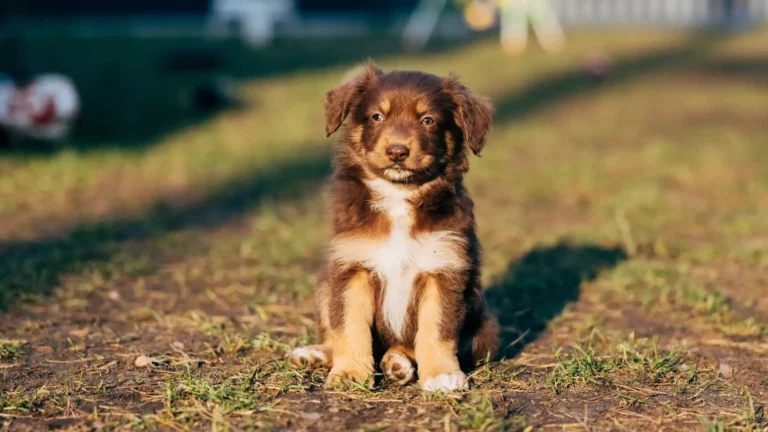
- Safety: Make sure your surroundings are safe and avoid places with a lot of noise or traffic.
- Short walks: Keep walks short and enjoyable to avoid fatigue.
- Positive experience: Make sure each walk is a positive experience.
Accessories
- Leash: A well-fitting leash is essential.
- Collar or harness: Choose a collar or harness that fits well but is not constricting.
- Poop bags: Always carry enough poop bags.
- Water and food bowl: Take water and a portable food bowl with you on longer walks.
Do's
- Reward positive behavior
- Be patient and understanding.
- Create a routine
Don'ts
- Don't overwork your puppy.
- Avoid noisy and stressful environments.
- Do not force your puppy to leave
When Your Adult Dog Won’t Go for a Walk Anymore
Is it an adult dog? There are two possible causes.
1. Does your pet have any physical ailments?
For example, he may be experiencing pain when walking or other symptoms. If this is the case, you should immediately consult a veterinarian to discuss the problem and find a solution.
2. Was your dog in a stressful situation during the last walk?
Can't remember anything specific? First, check with your veterinarian to see if your pet is in any physical discomfort. If he can't find anything wrong, take him for a walk as usual. Reassure your dog that there is nothing to be afraid of.
Frequently Asked Questions
If your puppy doesn't want to go for a walk, there could be many reasons. Maybe he is lazy, afraid, or the weather is too hot or too cold. He may be sick or injured.
If your puppy doesn't want to go for a walk, the first step is to find out why. Once you know the reason, you can respond appropriately. Read more about this in our article?
The first question many new dog owners ask is: "How often should my puppy go outside for fresh air?" In the first few months of life, puppies should be taken outside every 2 to 3 hours after eating, playing, and sleeping. As they get older, the intervals can be gradually increased. Frequent short walks are preferable to a few long walks. Try not to overexert your puppy.
Puppies sleep for up to 20 hours a day. This is normal and important for their development. If your puppy completely refuses to go for a walk, be patient and try again later.
It may happen that your puppy suddenly stops and sits down during a walk. If this happens, remain calm and give him time to get up. Do not urge him to continue walking, but try to motivate him with treats or kind words.
Puppies are allowed outdoors at about 8 weeks of age and after the necessary vaccinations. Talk to your veterinarian about the exact schedule.
Yes, if the puppy is exhausted or scared, it is perfectly fine to carry him.
Stay calm and reassure him without overpowering him.
My Conclusion
The first walks with your puppy are an exciting but challenging time. It's important to be patient and sensitive as your puppy explores his new world.
With the right preparation, accessories and a positive attitude, your pup will soon learn to love walking. Remember that every dog is unique and it's important to accommodate your pup's individual needs and pace.
Your puppy won't go for a walk? This is a common challenge that you can easily overcome.
Find out why. Always be patient but also consistent. Just follow our 5 tips and the challenge will soon be a thing of the past 👍.
▶ Have you faced this challenge and would like to share your experience? Do you have any questions? Then write them in the comments. We look forward to it 😊

My name is Anja Boecker, and I am a certified dog trainer and behavior consultant. With these articles, I want to help you to understand your dog better and to build an inseparable bond.
Share Now:


Hello my name is stephan my rotti bitch is now four months and I have the problem that when I go out with her she runs a few meters and then lies down in the meadow and just wants to lie down what can I do so that she is not so listless
Hello Stephan, it may be that your puppy has a joint problem or some other health problem that prevents him from walking long distances. Therefore, we would recommend that you contact your veterinarian for the time being.
Hello, my name is Olga. My dog Denver is exactly two months old now. He is still very afraid to go outside, quotes all over his body and doesn't move. He hasn't done a single wissi outside, comes home and goes pee on his pad. What am I doing wrong and are there any tips on how to get it under control?
Dear Olga, since we don't know the exact further circumstances, the solutions we can offer you are unfortunately limited. Is there a certain reason or an experience from the past that he is afraid to go outside? Possibly also sounds or noise, a certain smell? Have you tried to lure Denver out with his favorite treats? It is best to proceed step by step. First go outside the front door, stand there with him for a few minutes. Then back inside. Don't tug on the leash or push him to do it. A day later, go a few steps further, again only for a few minutes, then back inside, etc. If all this does not help, it would be good to involve a trainer in your area who can also observe Denver doing this and thus could better judge what this fear is associated with. Kind regards - Your Hundeo Team
Hello, have a little puppy with 12weeks, does not like to go for walks and with it he does his business in the apartment. What can do
Hello, I have a New English Bulldog he is 11 months old and does not want to go out.
I tried all the tips, but he is too lazy to walk. For 200 meters to the park I need 20 to 30 minutes.
A complete walk that everyone else does in 10 to 15 minutes takes mine 1.5 hours. He goes so slowly that I have him running behind me. From the front tugging on the leash there is advice. But I have with treats or kind words, nor with stand still and wait a chance. When I wait until the master goes on I have to be very patient. He lies down and sleeps.
What else should I do?
Will still have my dog x-rayed to see if he has something on the musculoskeletal system. If not ?
Something as lazy and comfortable as this dog exists only once in the world.
Love greetings
Hello, English Bulldogs usually do not have a high urge to move. Nevertheless, a checkup at the vet would be recommended, because behind it could also be a health problem.
Hello, my mini bull terrier is 6 months old just won't go for a walk. My husband carries him a short distance to the forest and then puts him down. He then sniffs and pees or defecates, then runs another 5 m , done !!!!
He doesn't want to run one meter, despite treats, calling or toys. We do not know what to do 😧😧😧
Dear Karin, if you have not yet contacted your vet about this, we recommend that you have a thorough checkup first, as it may be due to problems with the musculoskeletal system or cardiovascular problems.
Hello!!! A month ago we got a 2 month old puppy, in the beginning he didn't want to go out on the leash, but little by little we got it!!!! Now he is 3 but in the evening he doesn't want to go out... When I take him he starts crying... Can it be that he was in a milder climate for the first months and now that we brought him to Germany he still has to get used to the harsher climate? Thanks a lot
Hi Frederica, it is possible that your puppy is having difficulty adjusting to the harsher climate in Germany, especially if he spent the first few months of his life in a milder climate. Other reasons why your puppy may not want to go for walks would be:
Darkness: With early onset of darkness, some dogs may become unsteady and afraid of the dark. Make sure the area is well lit and perhaps go outside with a flashlight to help your puppy feel safe.
Negative experiences: Your puppy may have had negative experiences while walking (at night), such as unpleasant encounters with other animals or unfamiliar noises. This can make him feel unsafe.
Fatigue: Your puppy might just be tired in the evening and not want to go out. This is especially common with young dogs.
Health reasons: If your puppy suddenly does not want to go out and cries, this could indicate health problems or pain. It is advisable to have this clarified by a veterinarian.
If the problem persists, please contact a veterinarian or dog trainer to rule out possible health problems or behavioral issues and get early professional assistance.
Hello Mrs. Boecker
Since Saturday I have a little Maltese puppy 7 months old.
The dog comes from Romania and is not house-trained, which in my opinion means he has never been outside.
He comes from a breeder but has only ever done his business in the house on cloths.
I now try to take him out a few times a day, carrying him in the basket and letting him out briefly each time. But he doesn't want to walk at all and he often trembles.
I have now tried treats and today he walked a few steps.
What else can I do?
Hi Theresia, your puppy seems to be still getting used to his new home and surroundings. It's normal for a puppy to take some time to feel confident enough to run around outside, especially when they've just moved in. Here are some tips to help you with this:
patience,Give your puppy time to get used to the new environment. It may take a few days or even weeks before he feels confident enough to run around outside.
Positive ReinforcementReward your puppy with treats and praise when he does his business or even just takes a few steps. This helps him to build up a positive relationship with being outside.
Continuous exerciseGo outside regularly with your puppy, even if he is hesitant at first. Over time, he will feel more secure and gain confidence.
Increase slowlyStart with short walks and gradually increase the duration and distance as your puppy gets more comfortable. Be patient and take care not to overtax him.
Positive environmentMake sure that there is nothing outside that could frighten the puppy. Avoid loud noises or heavy traffic in the early stages of training.
If your puppy continues to be reluctant to go outside or shows signs of anxiety, it may be helpful to seek the professional help of a dog trainer or behavior specialist. They can offer individualized advice and techniques to help your puppy overcome their fears and become housebroken.
Not letting a dog outside until it is seven months old can be very stressful for it and lead to undesirable behavioral patterns. In the case of such anxiety- or stress-related behavior patterns (trembling), it makes sense to seek professional help at an early stage if no improvement is observed.
We wish you all the best and much success!